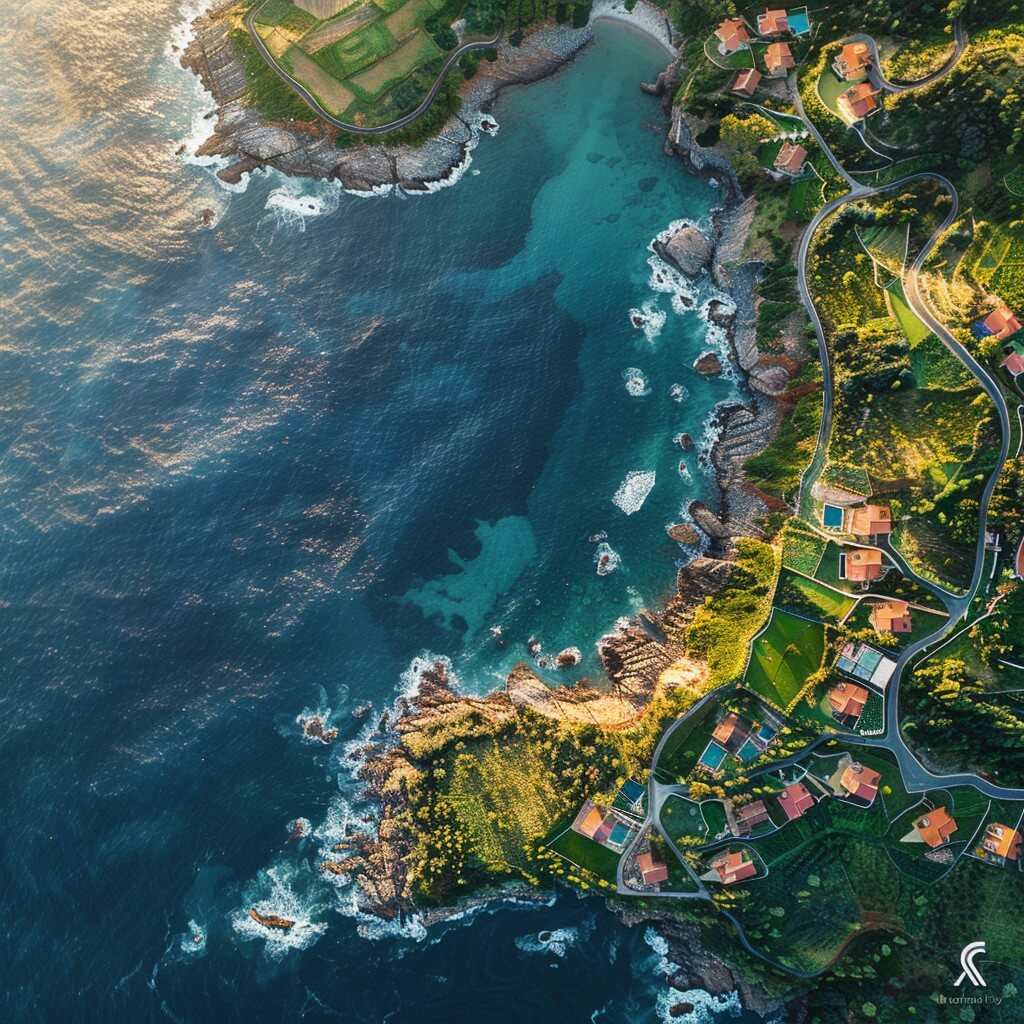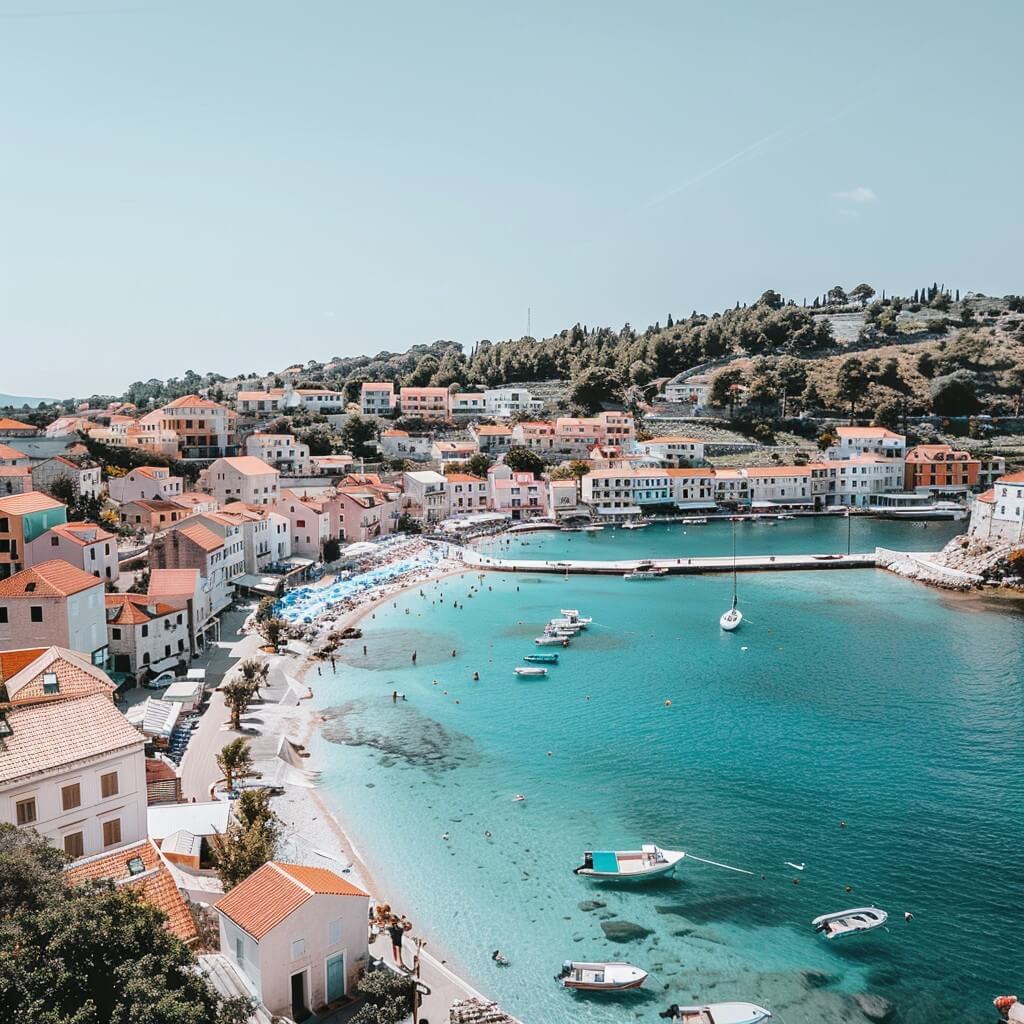
Best Coastal Towns and Beaches Along the Baltic Sea

Exploring the Baltic Sea coastal towns and beaches can be a magical experience, filled with charming seaside villages, pristine beaches, and captivating history.
If you’re planning a trip to this enchanting region, you might have a few questions and concerns.
Let’s dive into some common inquiries and provide a comprehensive guide to ensure you have an unforgettable coastal adventure.
Common Questions and Concerns
Which are the best coastal towns to visit along the Baltic Sea?
The Baltic Sea boasts several stunning coastal towns, including Gdańsk in Poland, Lübeck in Germany, and Riga in Latvia. Each town offers its unique blend of history, culture, and natural beauty.
What are the top beaches along the Baltic Sea?
Some of the top beaches include the Curonian Spit in Lithuania, Sopot Beach in Poland, and the beaches of Rügen Island in Germany. These beaches are known for their clean sand, clear waters, and family-friendly atmospheres.
What activities can I do along the Baltic Sea coast?
From exploring historical sites and enjoying water sports to relaxing in seaside cafes and hiking along coastal trails, the Baltic Sea offers diverse activities for every traveller.
Is it safe to swim in the Baltic Sea?
Yes, swimming in the Baltic Sea is generally safe. The water is clean, and many beaches have lifeguards on duty during the summer months.
What is the best time to visit the Baltic Sea coast?
The best time to visit is during the summer months, from June to August, when the weather is warm and the sea is ideal for swimming and other activities.
Top Coastal Towns and Beaches
Gdańsk, Poland
Gdańsk is a picturesque port city with a rich history dating back to the mediaeval era. The city’s old town is brimming with colourful buildings, charming cobblestone streets, and historical landmarks like the iconic Neptune’s Fountain.
A short drive away, you’ll find the beautiful Sopot Beach, known for its long wooden pier and vibrant boardwalk.
Exploring Gdańsk
Start your journey in Gdańsk’s Old Town, where you can wander through the picturesque streets and admire the stunning architecture.
Be sure to visit the Artus Court, a symbol of the city’s rich merchant history, and St. Mary’s Church, one of the largest brick churches in the world.
Day Trip to Sopot Beach
A quick train ride from Gdańsk takes you to Sopot Beach, a perfect spot for a day of relaxation.
Walk along the wooden pier, the longest in Europe, and enjoy the bustling atmosphere of the surrounding cafes and shops.
Sopot is also known for its vibrant nightlife, so consider staying late to experience the local scene.
Lübeck, Germany
Lübeck, a UNESCO World Heritage site, is renowned for its stunning Brick Gothic architecture and its status as a former leading city of the Hanseatic League.
The nearby Timmendorfer Strand offers a lively beach scene with a mix of sandy shores, beach clubs, and water sports.
Historical Lübeck
Lübeck’s Old Town is a must-visit, with its mediaeval buildings, narrow alleyways, and historic churches.
Don’t miss the Holstentor, a mediaeval gate that has become a symbol of the city, and the Marienkirche, an impressive Gothic church.
Relaxing at Timmendorfer Strand
Timmendorfer Strand is one of the most popular beaches in Germany. It’s perfect for a family day out, offering a variety of water sports, playgrounds for kids, and beach bars for adults. The Sea Life Centre is also a great spot to visit, especially if you’re travelling with children.
Riga, Latvia
Riga, the capital of Latvia, combines a vibrant city life with close proximity to serene coastal spots.
Jurmala Beach, just a short train ride from Riga, is famous for its long stretches of fine sand and wooden cottages, making it a perfect day trip for beach lovers.
Discovering Riga
Riga’s Old Town is a UNESCO World Heritage site filled with cobblestone streets, Art Nouveau architecture, and lively squares.
he House of the Blackheads, a stunning Gothic building, and the Riga Cathedral are just a couple of highlights.
A Day at Jurmala Beach
Jurmala Beach is a haven of relaxation. The beach stretches for over 20 miles, offering plenty of space to find your perfect spot.
Enjoy a leisurely stroll along the shoreline, take a dip in the sea, or explore the charming wooden cottages that dot the area.
Don’t forget to visit the Dzintari Forest Park for a peaceful walk among the trees.
Curonian Spit, Lithuania
The Curonian Spit is a unique natural wonder, a thin stretch of land with sandy dunes separating the Curonian Lagoon from the Baltic Sea.
This UNESCO World Heritage site offers tranquil beaches, scenic hiking trails, and charming fishing villages.
Exploring the Curonian Spit
Begin your visit in the town of Nida, known for its traditional wooden houses and stunning dune landscapes.
The Parnidis Dune is a must-see, offering breathtaking views of the Baltic Sea and the Curonian Lagoon.
The Curonian Spit is also a paradise for bird watchers, as it lies on the migratory path of many bird species.
Relaxing on the Beaches
The beaches along the Curonian Spit are some of the most pristine in the Baltic region. The sand dunes create a unique backdrop, making it a perfect spot for a peaceful day by the sea. The beaches are also ideal for windsurfing and kiteboarding, thanks to the steady winds.
Rügen Island, Germany
Rügen Island is Germany’s largest island, known for its diverse landscapes, including white chalk cliffs, sandy beaches, and lush national parks.
The island’s seaside resorts, such as Binz and Sellin, offer a mix of relaxation and adventure.
Discovering Rügen’s Natural Beauty
Jasmund National Park is a highlight of Rügen Island, home to the famous white chalk cliffs and dense beech forests.
The Königsstuhl (King’s Chair) is the most iconic cliff and provides stunning views over the Baltic Sea.
Exploring Binz and Sellin
Binz is the largest seaside resort on Rügen Island, known for its beautiful promenade, historic architecture, and sandy beaches.
Sellin is another charming town, famous for its picturesque pier and stunning coastal views. Both towns offer a variety of activities, from hiking and cycling to spa treatments and fine dining.

Tips for an Enjoyable Visit
Packing Essentials
- Comfortable Clothing: Bring light, breathable clothes for the day and a jacket for cooler evenings.
- Beach Gear: Don’t forget your swimsuit, sunscreen, and a hat to protect yourself from the sun.
- Walking Shoes: Comfortable shoes are a must for exploring the coastal towns and hiking trails.
Travelling Around
- Public Transport: Many coastal towns are well-connected by trains and buses, making it easy to explore without a car.
- Cycling: Renting a bike is a great way to discover the scenic routes along the coast.
Local Cuisine
- Seafood Delicacies: Try local seafood dishes like smoked fish in Germany, herring in Poland, and freshly caught fish in Latvia.
- Traditional Sweets: Indulge in regional treats like German marzipan, Polish pierniki (gingerbread), and Latvian sklandrausis (sweet pies).
Engaging with Locals
- Learn Basic Phrases: Knowing a few words in the local language can go a long way in enhancing your travel experience.
- Join Local Events: Participate in local festivals and events to immerse yourself in the culture.
Activities and Attractions
- Historical Sites: Each town along the Baltic Sea has its own unique history, with numerous museums, churches, and historical buildings to explore.
- Water Sports: Take advantage of the Baltic Sea’s calm waters by trying out activities like kayaking, windsurfing, and sailing.
- Nature Trails: The Baltic coast is home to many beautiful nature trails, perfect for hiking and bird watching.
Final Thoughts
The Baltic Sea coast offers a unique blend of history, culture, and natural beauty. Whether you’re exploring the mediaeval streets of Gdańsk, relaxing on the beaches of Rügen Island, or hiking the dunes of the Curonian Spit, there’s something for everyone along this enchanting coastline.
By addressing common questions and concerns, providing detailed information on top destinations, and offering practical tips for an enjoyable visit, this guide aims to ensure you have an unforgettable adventure along the Baltic Sea.
So pack your bags, grab your sunscreen, and get ready to explore the best coastal towns and beaches along the Baltic Sea!
Frequently Asked Questions
What are some of the best coastal towns along the Baltic Sea?
Notable coastal towns along the Baltic Sea include:
- Nida, Lithuania: A picturesque fishing village on the Curonian Spit, known for its stunning sand dunes and artistic vibe.
- Liepāja, Latvia: A city with a mix of beach resort charm and historical significance, featuring pristine sandy beaches ideal for relaxation and amber hunting.
- Sopot, Poland: Famous for its vibrant atmosphere, sandy beaches, and iconic pier, Sopot is a historical resort town that attracts many visitors.
- Usedom, Germany: Known for its long stretches of beach, Usedom features charming seaside towns like Ahlbeck and Bansin, popular for their imperial spa history.
Are Baltic Sea beaches suitable for families?
Yes, many Baltic Sea beaches are family-friendly, featuring amenities such as shallow waters, sandy shores, and nearby facilities.
Towns like Jurmala in Latvia and Usedom in Germany provide a range of activities suitable for children, including playgrounds, water sports, and organised family events, making them ideal destinations for family vacations.
What activities can visitors enjoy at Baltic Sea beaches?
Visitors to Baltic Sea beaches can engage in a variety of activities, such as:
- Swimming and sunbathing: Many beaches, like those in Jurmala, Latvia, and Nida, Lithuania, offer clean, sandy shores perfect for relaxation.
- Cycling and hiking: Coastal paths and trails, especially in areas like the Curonian Spit, provide scenic routes for outdoor enthusiasts.
- Water sports: Activities such as windsurfing and kayaking are popular in various locations along the coast.
- Nature observation: Birdwatching and exploring unique ecosystems, particularly in national parks like Lahemaa in Estonia, are also highlights.
What is the best time to visit the Baltic Sea beaches?
The best time to visit Baltic Sea beaches is during the summer months, particularly from June to August, when temperatures are warmer and the weather is generally pleasant.
This period also coincides with the peak tourist season, offering numerous events, festivals, and activities along the coast.
Are there any unique natural features along the Baltic coast?
Yes, the Baltic coast is home to several unique natural features:
- Curonian Spit: A UNESCO World Heritage site, this narrow sand dune peninsula separates the Curonian Lagoon from the Baltic Sea and is known for its dramatic landscapes and biodiversity.
- Drifting Sand Dunes: Found in places like Nida, these dunes create a striking, otherworldly environment.
- Amber Beaches: The sandy shores of Latvia and Lithuania are famous for amber, making them great spots for treasure hunting after storms.
You may also like
Archives
Calendar
| M | T | W | T | F | S | S |
|---|---|---|---|---|---|---|
| 1 | 2 | 3 | 4 | 5 | 6 | |
| 7 | 8 | 9 | 10 | 11 | 12 | 13 |
| 14 | 15 | 16 | 17 | 18 | 19 | 20 |
| 21 | 22 | 23 | 24 | 25 | 26 | 27 |
| 28 | 29 | 30 | ||||